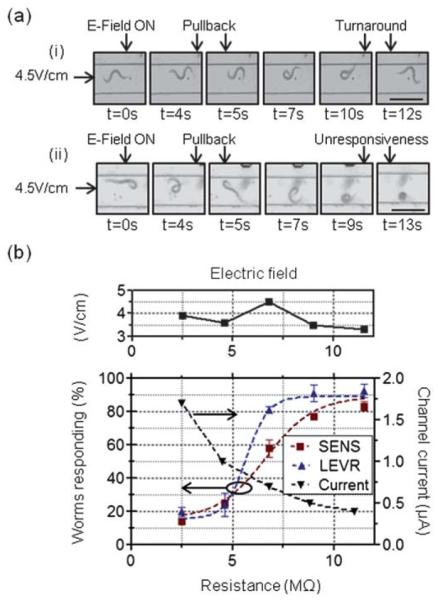Fig. 3.

Effects of decreasing channel resistance and characterization of nematode velocity in an electric field. (a) [scale bar = 300 μm] Time-lapsed images of a LEVR O. dentatum nematode in the straight microchannel are shown for a low (~0.3 μA) (i) and high (~2.5 μA) (ii) current in the channel. The electric field is turned on at time t = 0 and the reaction of the worm is videographed. In the case of low current, the worm initially retracts, turns its head around to align with the field direction and begins to move in the direction of the electric field. In the case of high current, the worm initially retracts, but quickly curls and becomes unresponsive. (b) The effect of changing the net resistance of the microchannel on the O. dentatum nematodes. As the resistance is decreased, the current flowing in the microchannel increases. At currents above 1 mA, more worms are hindered by the current and become unresponsive – thus control of worm movement is lost.
